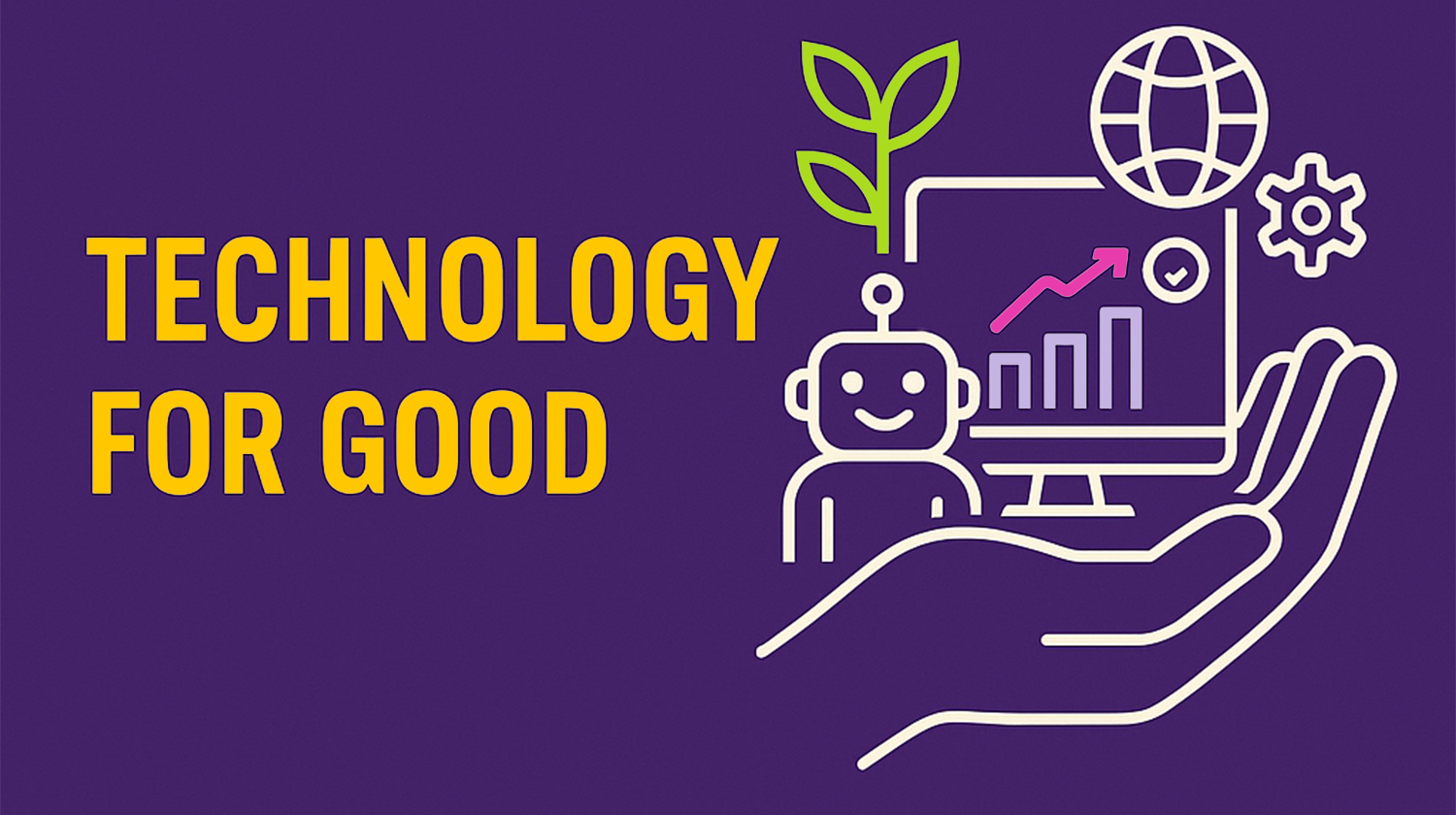

The Common Spring Quarter Final Project is the “Technology for Good,” Challenge. It is a Team Challenge to investigate how Technology can be used to enhance disclosure of an Environmental, Social, or Governance (ESG) issue. Disclosures surrounding ESG-related issues are of contemporary importance to accounting professionals. There are real-time developments happening across the globe to reshape stakeholder priorities at all types of organizations. As stakeholder priorities are rebalanced at companies, they are turning to trusted accounting professionals to aid in the provision of relevant and reliable disclosure meeting the new stakeholder demands.
This project challenges you to explore how emerging technologies — including robotic process automation (RPA), agentic AI, and other intelligent automation tools — can be applied to reduce the cost and complexity of ESG-related disclosures while increasing reporting efficiency and accuracy. These technologies hold particular promise in automating repetitive and error-prone tasks such as data ingestion, cleansing, and structuring, thereby enabling more timely and reliable ESG reporting and assurance.
Beyond automation alone, this project invites you to critically examine how technology, including modern data capture and analytics, can be used as a force for good, empowering accounting professionals to meet evolving regulatory requirements, support data-driven decision-making, and enhance trust among stakeholders. The integration of intelligent automation into the ESG disclosure ecosystem represents a substantial opportunity for the profession — one that demands creativity, technical fluency, and a strong ethical orientation.
The costs and benefits of ESG disclosure and resultant investment analysis are evolving and widely debated topics. We will certainly not all agree on the relative importance of the various ESG factors and the politics surrounding ESG regulation and practices. What we can hopefully agree on is that ESG disclosures represent a substantial opportunity for accountants to add value to clients and/or their employers. There is a strong consensus among accounting leaders that ESG will be one of the most significant growth drivers of the accounting profession in the coming decade.
Below summarizes the required deliverables and key dates for this project. The contribution toward your overall grade in Accounting 520, 527, and 528 will be determined by your
individual faculty members. Please check the respective course syllabus for additional details. Your
individual course instructors will grade the deliverables with a focus on the components, concepts, and
elements related most closely to their respective courses.
The Required Deliverables for the Spring Common Final Project are:
The Required Deliverables for the Spring Common Final Project are:
Your paper should:
Your presentation should:
The CFA Institute lists the following commonly-considered, measurable factors as components of an ESG investment process:
This policy outlines expectations for the responsible and ethical use of generative AI technologies, including large language models (LLMs) such as ChatGPT, in this course. These tools can significantly enhance learning, productivity, and creativity–but must be used transparently and professionally to support a respectful and effective learning environment.
Generative AI may be used to assist with idea generation, research, document drafting, programming, editing, and other academic work, provided the output is critically reviewed, refined, and understood by the student or team. Use of AI is encouraged when it enhances the learning process.
Students are responsible for the accuracy, relevance, and integrity of any work submitted, including content influenced or generated by AI tools. Errors introduced by generative AI–factual, analytical, or interpretive–will be treated as student errors and may result in reduced grades.
Students may be asked to disclose when and how they used generative AI tools in individual or team assignments. In cases where the use of AI significantly contributes to the submission (e.g., coding assistance, text drafting), students should include a brief statement describing the use.
Submitting AI–generated content without understanding it, using AI to bypass individual learning (e.g., for comprehension–based quizzes or in–class polls), or allowing AI to make up sources or misrepresent work is a violation of course expectations and academic integrity.
This policy may be updated as the role of AI in education continues to evolve.